

|
|
The Child Within Is More Than "The Child Within"
There's a Hawaiian expression, "keiki o ka aina," child of the land or children of the land, that describes the Hawaiian culture's connection to the land, which is understood to be the entire biosphere, not just the soil, rivers, etc. The phrase expresses the view that humans are children of the land. Understood in this context, "the child within" describes our connection to Nature and the biosphere which sustains us. Before we explore this further, let's consider the modern psychological context of "the child within." It's understood that our childhood experiences shape the familial and relationship templates, coping mechanisms, insecurities, vulnerabilities and sources of resilience that we carry into and throughout our adult life. In this sense, our childhood is always within reach, informing and shaping our adult responses. By way of example, Orson Welles' classic film Citizen Kane uses the character's memory of his boyhood sled (Rosebud) to evoke what he lost and retained from his childhood until his dying breath. The influence of childhood experiences is generally understood in the therapeutic context of health, wellness or psychology: if there is a problem, there must be a therapeutic solution, be it a medication, procedure or therapy. The goal of the therapeutic mindset is efficiency: find the fastest, most efficient solution, on the assumption that there will always be some effective therapy that speeds up the natural healing process or cures the disease. We all understand that "big-T" childhood traumas such as physical / sexual abuse create emotional / psychological scars that the child carries into adulthood. Recent studies have found that even "small-t" traumas such as uncaring parents who subject the child to constant criticism, a.k.a. harsh parenting, neglect and bullying, also leave emotional scars that are visible as physiological changes in the child's brain. Borderline Personality Disorder May Be Rooted in Trauma (Scientific American) Growing up in unstable households characterized by fear and insecurity has consequences that continue into adulthood. "The child within" is always present and within reach, whether the individual acknowledges it or not. That the economy and society generate "small-t" derangement does not compute in the therapeutic mindset: the solution is for the troubled individual to take medications and /or learn cognitive-therapy coping mechanisms to manage the derangements created by the system they inhabit. I discuss this blind spot--or shall we call it a taboo against identifying the system as the source of derangement?--in my book on burnout, as in my experience burnout is often exacerbated by the structure of work and the social order. In other words, it isn't just individual choices that lead to burnout--the system generates burnout by its very nature. In the current social climate, there is a tendency for discussions of causation to veer into victimhood, to absolve the individual of responsibility by assigning the source of the difficulty to others or the prevailing conditions. This distorts the human condition, which as the Stoics understood, is a dynamic mix of conditions we don't control and our response to those conditions, which we do control. Denial and suppression don't resolve distortions and derangement, but the social order favors those strategies because they paper over difficult problems. So when individuals burn out, no one looks to the system they inhabit or their childhood for answers; the "solutions" offered are powerful medications with side-effects or happy-story therapeutic salves such as suggestions to listen to meditation recordings or "take time to enjoy your hobbies"--as if the burnout has the time and energy to invest in hobbies, and calming music magically cures over-work and unbearable levels of stress. In my view, the only real-world solution is to exit the conditions causing burnout and renounce the set of values and goals that lead people to stay in conditions that are eroding or destroying their health. These include the obvious conditions such as work environments and toxic relationships, but it also includes less obvious causal factors such as diet, fitness, the values and goals that were internalized without question and "the child within" who continues to influence our adult perceptions, emotions and responses. Switching back to the other child within, the Child of the Land, I am struck by the divide between the world human beings were selected to thrive in over the past 800,000 years--the hunter-gatherer, low-impact community-centric agrarian lifestyle--and the modern urban environment that is largely devoid of any traces of the world that we were designed to thrive in. Homo sapiens split off from our cousins the Neanderthals and Denisovans around 800,000 years ago and reached our current state as homo sapiens sapiens around 200,000 years ago. "Modern life" can be viewed as a progression from small, dense urban environments and intensive agriculture (from around 3,000 BC) to large cities and empires (from around 2,000 years ago) to the industrialized age that began about 200 years ago to the 20th century era of global communication, personal vehicles, highly processed foods and the decline of physical labor, and then to the recent explosion of the highly addictive technologies of mobile telephony, gaming and social media, a development that began a mere decade or two ago. While we understand that our fellow primates might not be overjoyed to be imprisoned in dull gray concrete cages with iron bars (i.e. conventional zoos) because there is nothing natural about these "concrete jungles," we view humans as infinitely malleable, able to seamlessly adapt to any environment, from a space station to a steel high-rise or shantytown. This confidence in our infinite adaptability is more magical thinking that science, and it seems to me the multiplying derangements of the modern world are evidence that our genetic heritage is not so easily erased and reprogrammed by cultural adaptations. To take one example I discussed in a recent Musings, we are encouraged by ceaseless marketing to buy and consume food that hijacks our brain's pleasure centers, i.e. eat what tastes good, which is high in salt, fat and sugar, as these are scarce in nature. This highly processed food lacks the fiber and diversity of the diet we were selected to consume, just as our sedentary lifestyle is at odds with the active, mobile lifestyle were we selected for. The only possible output of these changes is disease. (As the Chinese saying put it, "disease comes through the mouth.") Rather than question our infinite adaptability to a sedentary lifestyle of highly processed foods, we counter these sources of ill-health with medications, all of which have side-effects, either recognized and downplayed or as yet unrecognized because we don't really test medications for interactions or long-term consequences. They took blockbuster drugs for weight loss and diabetes. Now their stomachs are paralyzed (via Cheryl A.) The same can be said of addictive technologies. The net results of our supposed adaptability are staggering: it seems a significant percentage of young American males forego work and sex to devote themselves to gaming, and up to 40% of the vast populations of China, India and Pakistan have metabolic disorders, i.e. are diabetic or pre-diabetic due to changes in diet and lifestyle. In other words, it turns out we're not infinitely adaptable. Stripped of the world we were designed to thrive in, we sicken and become deranged, just like other creatures stripped of the world they were designed to thrive in. The keiki o ka aina is still within us, but in our god-like hubris, we ignore it. The few long-term (multi-decade) studies that exist find that human happiness and good health are functions of positive, long-term relationships, not what we're constantly told are important (wealth, status, fame) nor what we're sold (processed food, addictions and distraction). Wealth, convenience and junk food do not register as the sources of contentment, longevity or health. The Blue Zone books made quite a splash a few years ago. What struck me about the Blue Zone communities was their obvious ties to the keiki o ka aina, the child of the land within us all. The Greek islanders and Okinawans live in small communities, tending gardens and animals far into old age, sharing the bounty of their labor and enjoying conviviality. Yes, they have phones and TVs but the core activities of their lives are very clearly embedded in the natural world we were selected to thrive in. They eat real food, not the processed food that's packaged and presented as "real food." The news media loves to highlight super-elderly individuals who claim their longevity is due to sipping scotch and eating French fries, but the longevity of the Blue Zone inhabitants is not due to eating processed foods, being sedentary and addicted to drugs, gaming, social media and "entertainment." Blue Zone inhabitants live in communities, not isolated cabins in the wilderness. (Per Isaac Asimov's story in which each planet has 5 residents who were freaked out when they had to see each other in person.) I have long been struck by the depressing ugliness of many urban environments. Few others seem to notice this ugliness, and it's deemed perverse and negative to even mention it (come on, be positive!). But given what we know about genetics and epigenetics, it seems highly likely the Child Within sees the ugliness and is impacted by it, even though the awareness is repressed. I understand that humans have favored the excitement, stimulation, variety, opportunities, comforts and conveniences of cities for thousands of years. But I also know that cities in the recent past (19th century) raised half of their food within city limits, and some cities are more livable than others. Towns and suburbs are also urban centers. In other words, there is a spectrum of livability that is generally viewed economically rather than in terms of ties to the world we were selected to thrive in. The ignored / suppressed costs of living in an increasingly unlivable urban environment eventually overwhelm the benefits. It's certainly possible to eat real food and have an active lifestyle in a city, but as food production and supply chains break down, healthcare breaks down and the social fabric breaks down, maintaining private bubbles of wellness in a sea of derangement, illness and incoherence will become increasingly precarious. I am also struck by the artificiality of shopping for food. The disconnect between nurturing plants and animals and what we eat is like the Grand Canyon, but very few seem to even see the divide. But the Child Within sees it, and this is why prison-reform programs engage hardened lifers in tending gardens and animals, to reconnect their shattered selves with something other than crime, violence and exploitation. We ignore the sources of ill-health, derangement and increasingly, of social breakdown, because we've persuaded ourselves that we're infinitely adaptable and what matters is the growth of consumption / the economy, and assembling as much private financial wealth as we can manage. The child within is wiser, but unheard and unheeded. 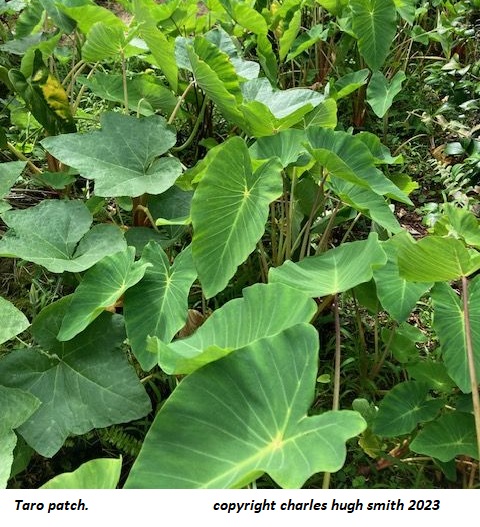
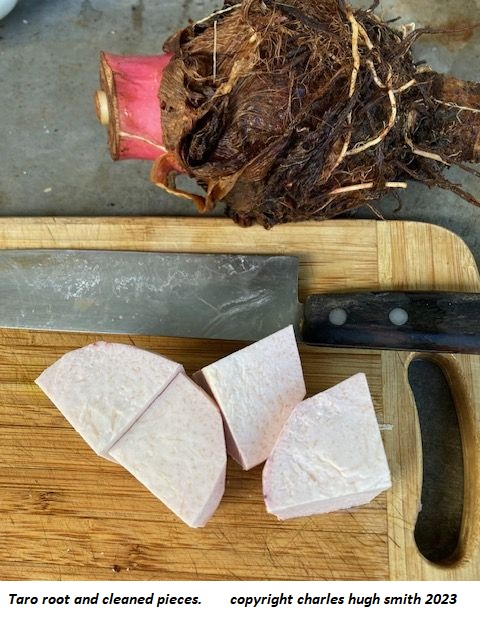
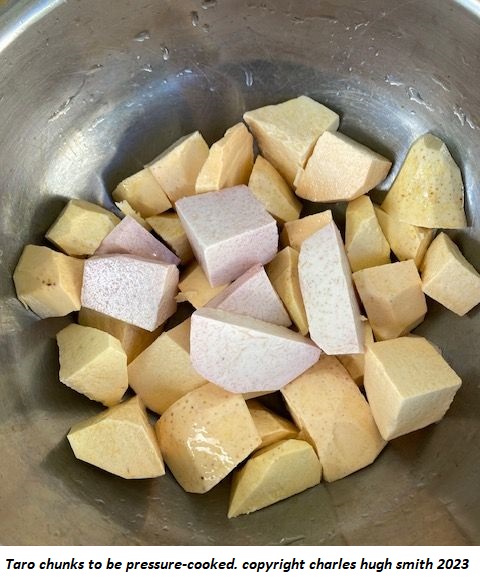
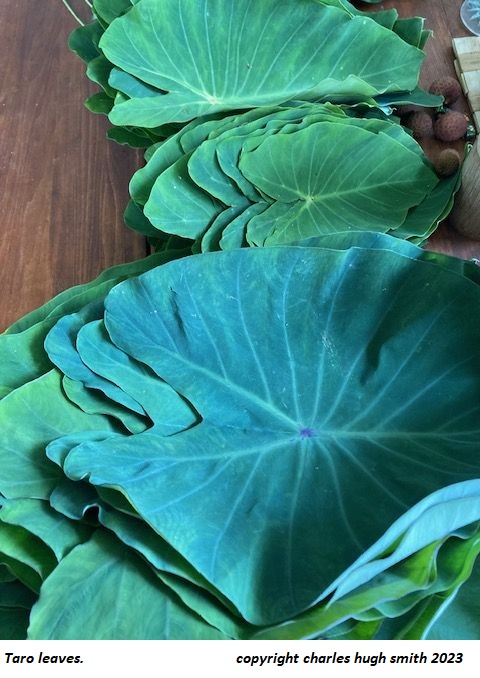
There is much more on self-reliance and degrowth in the books listed below, including my new book Self-Reliance in the 21st Century ($8.95 ebook, $18 print). Read the first chapter for free (PDF). 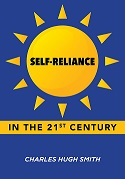

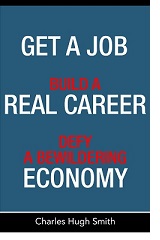
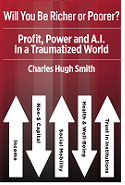

Self-Reliance in the 21st Century ($8.95 ebook, $18 print). Read the first chapter for free (PDF). When You Can't Go On: Burnout, Reckoning and Renewal $18 print, $8.95 Kindle ebook; audiobook Read the first section for free (PDF) Global Crisis, National Renewal: A (Revolutionary) Grand Strategy for the United States (Kindle $9.95, print $24, audiobook) Read Chapter One for free (PDF). Will You Be Richer or Poorer?: Profit, Power, and AI in a Traumatized World (Kindle $5, print $10, audiobook) Read the first section for free (PDF). Get a Job, Build a Real Career and Defy a Bewildering Economy. Read the Introduction and Section One for free. |
| |
|
Copyright 2023 Charles Hugh Smith all rights reserved in all media. No reproduction in any media in any format without written permission of the author. |
|
|